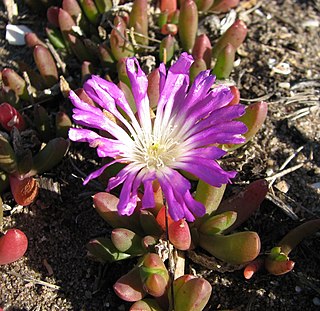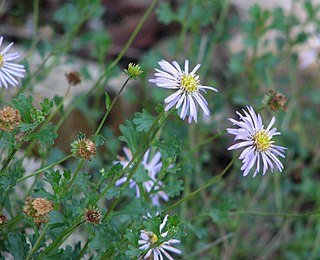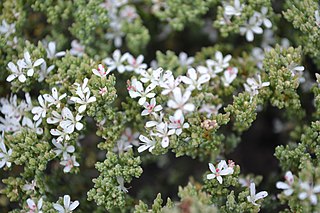
Boraginaceae, the borage or forget-me-notfamily, includes about 2,000 species of shrubs, trees and herbs in 146 genera with a worldwide distribution.

Bosko is an animated cartoon character created by animators Hugh Harman and Rudolf Ising. Bosko was the first recurring character in Leon Schlesinger's cartoon series, and was the star of 39 Looney Tunes shorts released by Warner Bros. He was voiced by Carman Maxwell, Johnny Murray, and Billie Thomas during the 1920s and 1930s, and once by Don Messick during the 1990s.
Hugh Harman was an American animator known for creating the Warner Bros. Cartoons and MGM Cartoons and his collaboration with Rudolf Ising during the golden age of American animation. He began his work with Walt Disney in 1922, working on Disney's early Laugh-o-Gram toons. When that company went bankrupt, Harman and partner Rudolf Ising tried to start a new series based on the Arabian Nights, but were unable to obtain funding. Disney called them back when he began work for Charles Mintz, producing the Oswald the Lucky Rabbit. After a dispute over pricing, Mintz forced out Disney and kept Harman and Ising on for another year, when they in turn were forced out. Harman, Ising, and a few other ex-Disney animators put together a pilot short, "Bosko the Talkink Kid", which was used by producer Leon Schlesinger to obtain a contract with Warner Brothers' studios to produce animated cartoons. Harman and Ising started the Looney Tunes and Merrie Melodies cartoons, and produced them for several years. After another argument over money, Harman and Ising left Warner Brothers for MGM in 1933. They produced quite a few "Happy Harmonies" for MGM until yet again they left over another financial arrangement. After MGM, Harman & Ising formed their own studio, but was not successful. MGM hired them back, but by this time their faux-Disney style of animation was out of fashion, and they found themselves eclipsed by the works of William Hanna & Joseph Barbera & Fred Tex Avery. In the 40s and 50s, both men did some work for Walter Lantz Studios.
The Ising model, named after the physicist Ernst Ising, is a mathematical model of ferromagnetism in statistical mechanics. The model consists of discrete variables that represent magnetic dipole moments of atomic "spins" that can be in one of two states. The spins are arranged in a graph, usually a lattice, allowing each spin to interact with its neighbors. Neighboring spins that agree have a lower energy than those that disagree; the system tends to the lowest energy but heat disturbs this tendency, thus creating the possibility of different structural phases. The model allows the identification of phase transitions, as a simplified model of reality. The two-dimensional square-lattice Ising model is one of the simplest statistical models to show a phase transition.

The Piperaceae, also known as the pepper family, are a large family of flowering plants. The group contains roughly 3,600 currently accepted species in 5 genera. The vast majority of species can be found within the two main genera: Piper and Peperomia.
In physics, critical phenomena is the collective name associated with the physics of critical points. Most of them stem from the divergence of the correlation length, but also the dynamics slows down. Critical phenomena include scaling relations among different quantities, power-law divergences of some quantities described by critical exponents, universality, fractal behaviour, and ergodicity breaking. Critical phenomena take place in second order phase transitions, although not exclusively.

Goopy Geer is an animated cartoon character created in 1932 for the Merrie Melodies series of cartoons from Warner Bros. He's a singing, dancing, piano-playing dog who is considered to be "the first Merrie Melodies star", although he only starred in three cartoons.

Foxy is an animated cartoon character featured in the first three animated shorts in the Merrie Melodies series, all distributed by Warner Bros. in 1931. He was the creation of animator Rudy Ising, who had worked for Walt Disney in the 1920s.

Nigella sativa is an annual flowering plant in the family Ranunculaceae, native to eastern Europe and western Asia, but naturalized over a much wider area, including parts of Europe, northern Africa and east to Myanmar.
Quantum annealing (QA) is a metaheuristic for finding the global minimum of a given objective function over a given set of candidate solutions, by a process using quantum fluctuations. Quantum annealing is used mainly for problems where the search space is discrete with many local minima; such as finding the ground state of a spin glass or the traveling salesman problem. Quantum annealing was first proposed in 1988 by B. Apolloni, N. Cesa Bianchi and D. De Falco. It was formulated in its present form by T. Kadowaki and H. Nishimori (ja) in "Quantum annealing in the transverse Ising model" though a proposal in a different form had been made by A. B. Finnila, M. A. Gomez, C. Sebenik and J. D. Doll, in "Quantum annealing: A new method for minimizing multidimensional functions".

Maireana is a genus of around 57 species of perennial shrubs and herbs in the family Amaranthaceae which are endemic to Australia. Species in this genus were formerly classified within the genus Kochia. The genus was described in 1840 by the botanist, Moquin-Tandon and named to honour Joseph François Maire (1780-1867), an amateur botanist who befriended him during the author's first visit to Paris in 1834.

Disphyma is a genus of flowering plants in the family Aizoaceae that are native to New Zealand, Australia and southern Africa. Plants in this genus are prostrate, annual or short-lived perennial shrubs with succulent leaves and daisy-like flowers arranged singly on the ends of shoots with petal-like staminodes, many stamens and usually five styles.

Calotis is a genus of herbs or small shrubs in the daisy family Asteraceae. Most of the species are native to Australia, while two occur in Asia.
This is a listing of all the animated shorts released by Warner Bros. under the Looney Tunes and Merrie Melodies banners between 1930 and 1939, plus the pilot film which was used to sell the Looney Tunes series to Leon Schlesinger and Warner Bros. A total of 270 shorts were released during the 1930s.

Frankenia is the only genus in the Frankeniaceae family of flowering plants. Other genera have been recognized within the family, such as Anthobryum, Hypericopsis and Niederleinia, but molecular phylogenetic studies have consistently shown that they all belong inside Frankenia. Frankenia comprises about 70–80 species of shrubs, subshrubs and herbaceous plants, adapted to saline and dry environments throughout temperate and subtropical regions. A few species are in cultivation as ornamental plants.

Quantum simulators permit the study of quantum systems that are difficult to study in the laboratory and impossible to model with a supercomputer. In this instance, simulators are special purpose devices designed to provide insight about specific physics problems. Quantum simulators may be contrasted with generally programmable "digital" quantum computers, which would be capable of solving a wider class of quantum problems.

Roepera is a genus of flowering plant in the family Zygophyllaceae. It is native to southern Africa and Australia.
Carinavalva is a genus of flowering plants belonging to the family Brassicaceae.
Malacocera is a genus of flowering plants belonging to the family Amaranthaceae.
Grammosolen is a genus of flowering plants belonging to the family Solanaceae.











